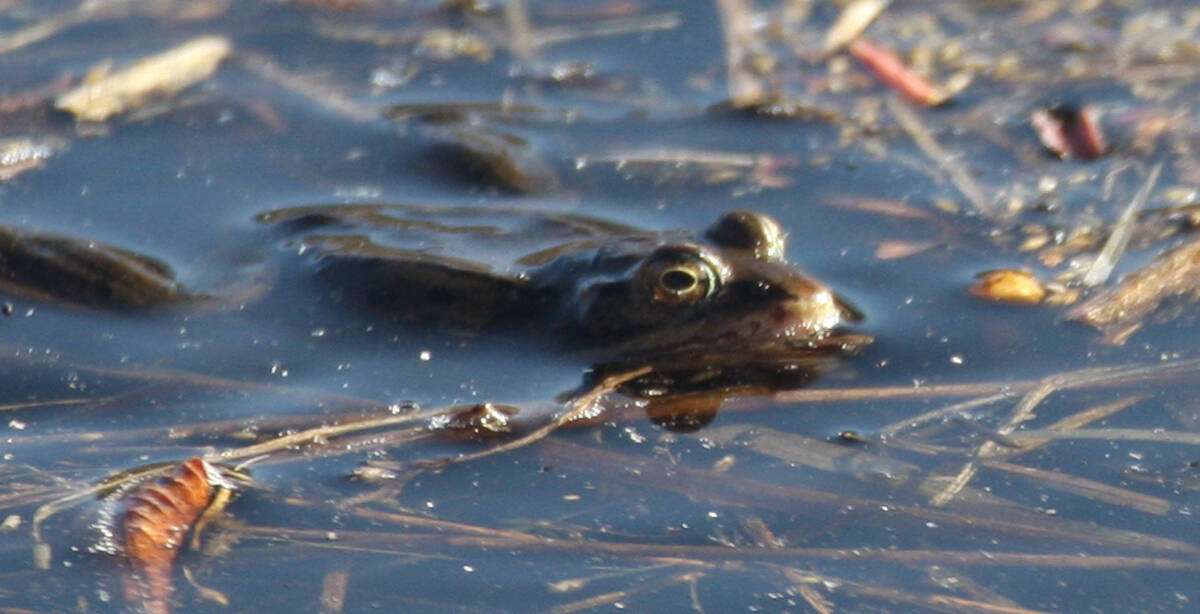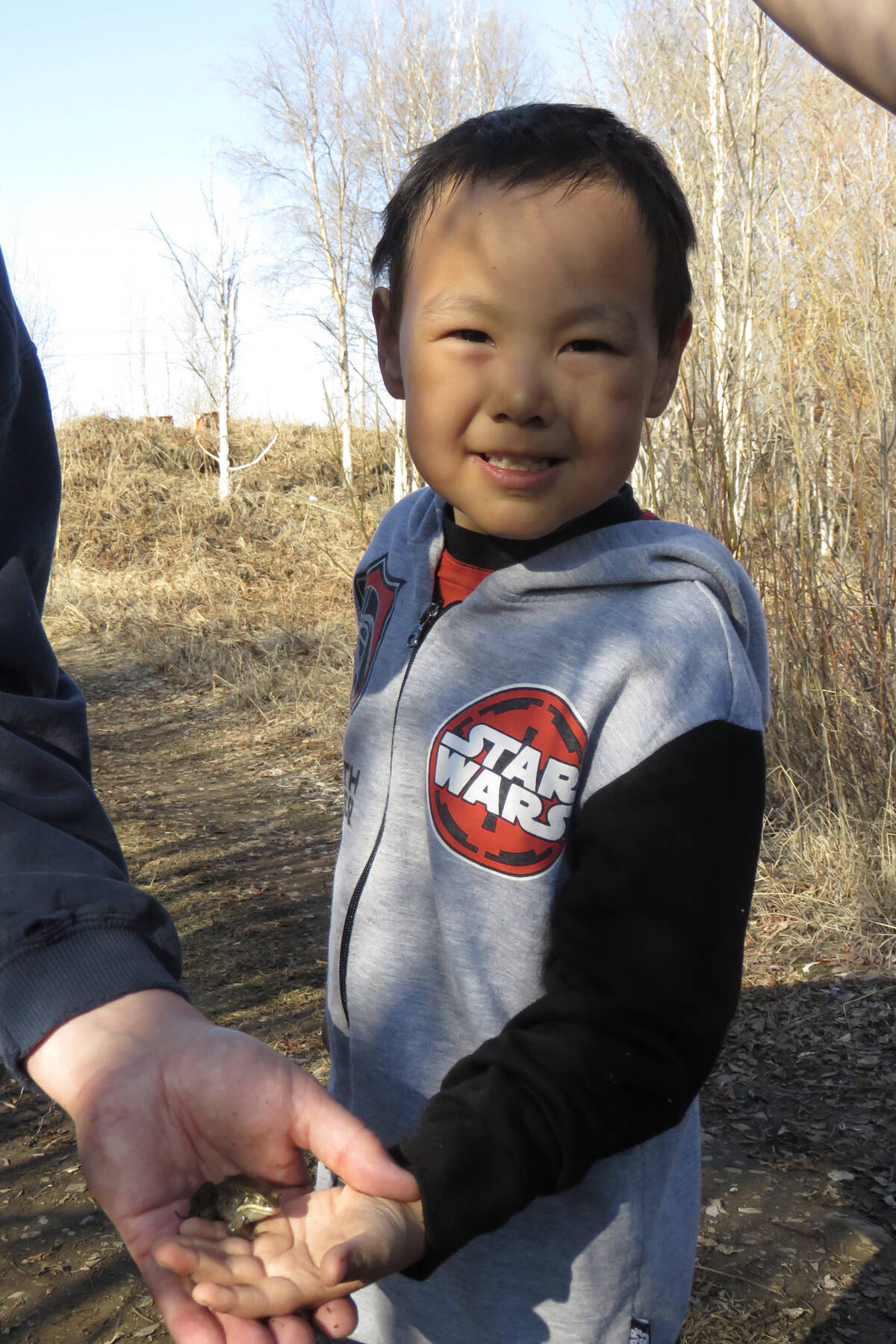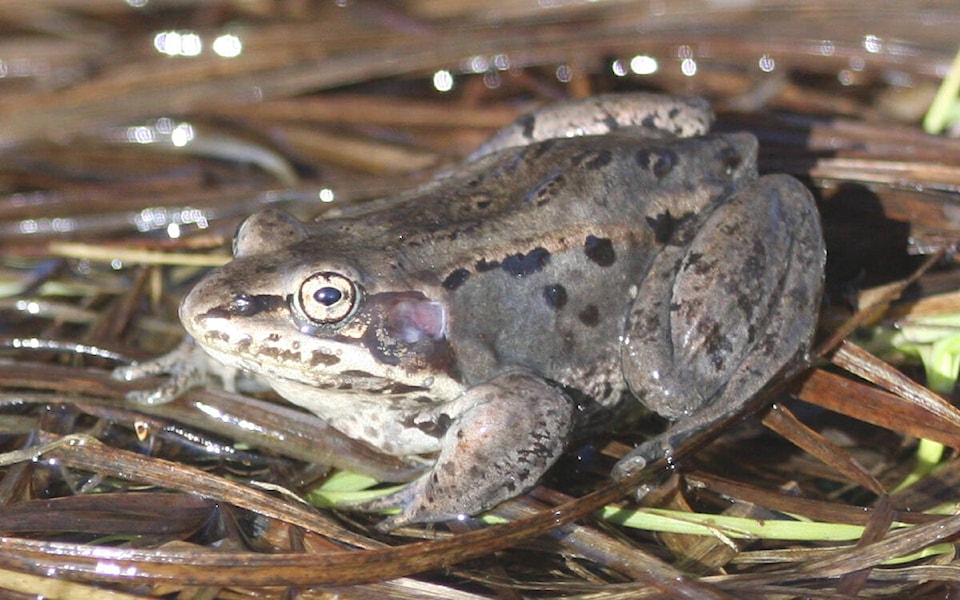
When you say the word “Arctic,” certain iconic animals jump to mind.
Polar bears, narwhals, Arctic foxes and caribou, for example.
But frogs? As it turns out, the Beaufort Delta is a hopping place for the amphibians.
“The frogs around the Mackenzie Delta are wood frogs (Lithobates sylvaticus,)” said Environment and Natural Resources wildlife manager Steve Baryluk. “Wood frogs are found across almost all the forested regions of Canada, and around Inuvik is the most northerly place that they’re found in Canada. The wood frog is the only amphibian found north of the Arctic Circle in Canada.
“It is their breeding time, so males are very active trying to attract females. They are quite noisy at this time of the year, especially on warm days. Some people might mistake their mating calls for birds – a good suggestion is to search on YouTube for wood frog mating call videos and learn what to listen for. You might have heard them before and didn’t even realize it! Soon they will stop breeding and will quiet down, so it’s currently a great time to go listening and looking for frogs.”
Considered a species of least concern, wood frogs are as hardy as they are widespread. While other species like geese flee to warmer pastures in the winter, these stubborn critters spend their entire lives in the Delta.
They accomplish this by increasing glucose and urea in their cells, which acts as a sort of natural antifreeze.
“Wood frogs hibernate over the winter,” said Baryluk. “During this time, they basically stop breathing and their heart stops beating. They produce a special ‘antifreeze’ in their bodies that stops their cells from freezing. Then, when the weather warms, the frogs thaw out and they start feeding and mating.
“Around Inuvik, that means that they are frozen for up to eight months of the year! There are some researchers currently looking at the genetics of wood frogs near Inuvik to see how they can survive being frozen for so long compared to their counterparts down south.”

Even though they’re a mere eight centimetres long, wood frogs can move hundreds of kilometres from their hibernation sites to their breeding sites every season. They typically return to the same breeding ponds year after year, using shallow basins typically less than one metre deep that fish don’t like. The average lifespan of a wood frog is four to six years, but some have been found to live up to 10 years. Females tend to live longer than males and are usually larger as well.
Once the frogs finish serenading one another and get down to business, the females will lay around 3,000 eggs each, which the males fertilize after they’ve been laid. Tadpoles hatch within three weeks and feed on algae, protozoans, insect larvae and other organic matter. They develop into juvenile frogs within seven to 18 weeks. Adult frogs hunt the way you would imaging, chilling out on a rock or log until something some close enough for it to snatch up.
For those eager to spot one of these Northern survivors, Baryluk recommends having a pair of polarized goggles to be able to see below the water surface, as they tend to stick close to water.
“They can be difficult to spot because they often swim down into the water when they see/sense something approaching,” he said. “If you stand still long enough though, they will usually start to come to the surface again. You can find them in shallow ponds in and around Inuvik, as well as other parts of the Mackenzie Delta.
“In southern Canada they generally call at night, but with our 24-hour daylight, they call at all times of the day! “
